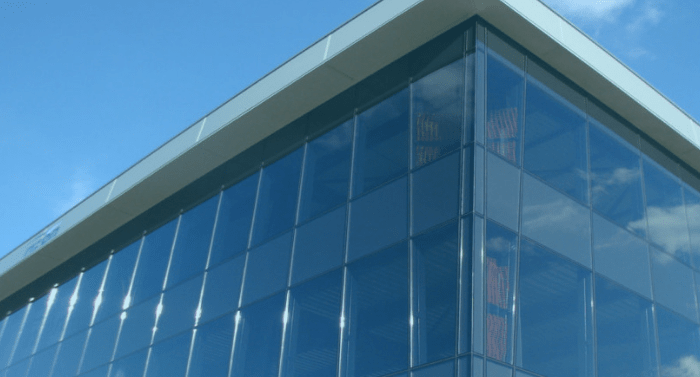Structural Glazing can be simply defined as a continuous system of bonding of specialized glass to an aluminium frame using specialized silicone sealants. While technically any type of glass can be used in structural glazing, the types are carefully selected considering many factors that range from energy conservation to subsequent interior decorations. The aluminium frames utilized have to obviously be of high-strength nature. The silicone sealants used are supposed to be high-performance sealants that can protect the building from air, dust, moisture, and heat.
The three types of Structural glazing we offer are
- Stick Glazing
- Semi Unitized Glazing
- Curtain Wall Glazing
Advantages of Structural Glazing
- In structural glazing the two materials predominantly used are glass and aluminium. Both these primary materials neither corrode nor decay when comparing other conventional building material like wood, iron, steel etc.
- Aluminium as a material can be recycled. Experts on metallurgy generally agree that aluminium can be recycled over a period of approximately 50-55 years. Thus aluminium is widely regarded as an environmentally-friendly metal.
- One another advantage of aluminium is its light-weight nature. Hence they do not load the building structure with more weight.
- Alumnium albeit being a light-weight material is also known to be strong. Remember the airplanes are built of aluminium.
- Light penetrates the structurally glazed building through the glass facades and hence their employment translates to reduced energy bills. Unlike conventional buildings, these buildings do not require lightening in broad daylights. Energy saving is an important aspect in all green-certified buildings.
- The processed glass used in structural glazing system also insulates the building from heat and sound. Insulation from outside heat once again translates to less air-conditioning requirements and hence reduced energy bills.
Other Advantages of Structural Glazing
- Most high-rise buildings require heavy maintenance. But a building with structural glazing done requires minimal maintenance only.
- They are effectively protected against damages caused by wind, water and heat.
- It is a matter of fact that structural glazing adds an element of aestheticism to the building. The characteristic feature of the aluminium frame is its ability to conceal itself from the exterior.
- Since their installation is modular in nature, other building activities can also be accommodated simultaneously.
- On the whole, the entire building gives a perfect finish as they appear uniform and smooth.
In a nutshell, structural glazing offers the following advantages
- Excellent flatness
- Lightweight
- Excellent exterior characteristic
- Weather ability
- Vibration Damping
- Sound insulation
- Heat insulation
- Ease of installation
- Ease of maintenance


